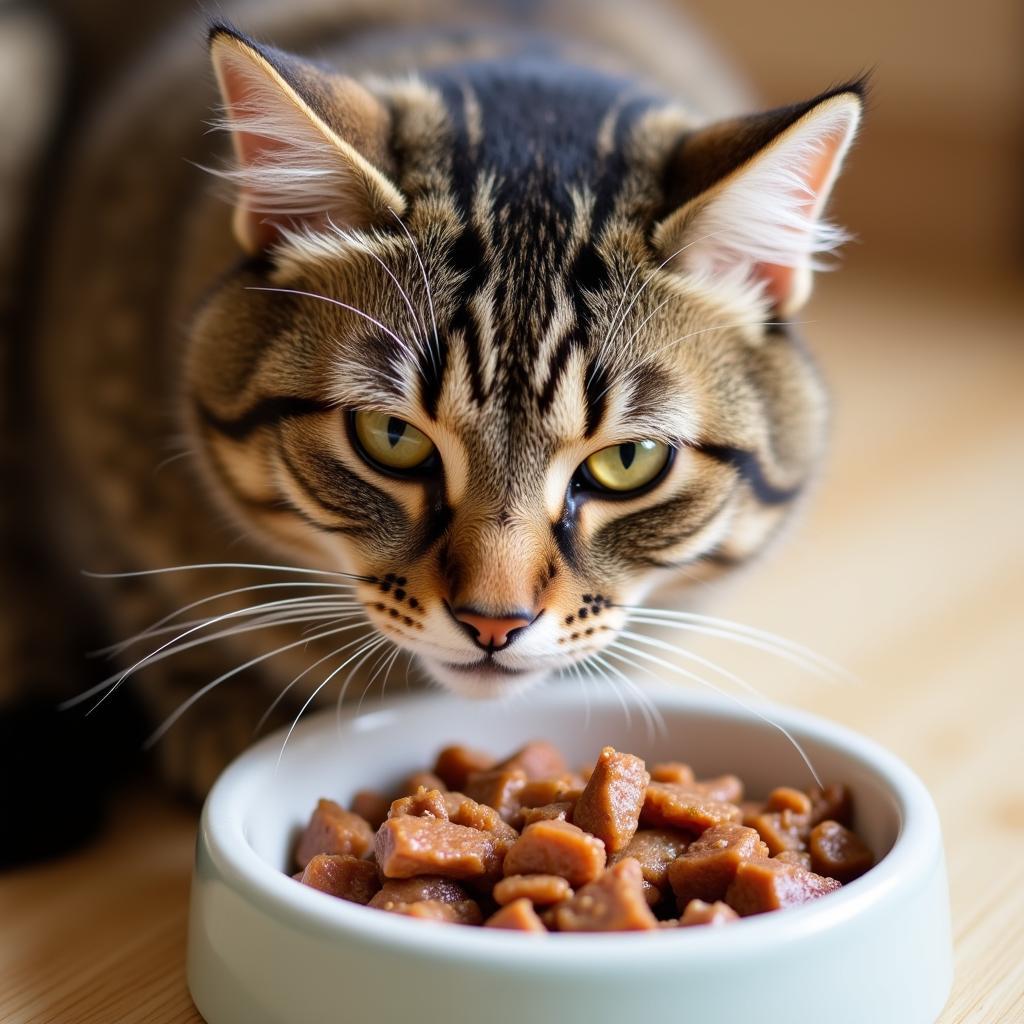Concerned about What Cat Food Brands Have Sawdust In Them? You’re not alone. Many cat owners worry about fillers and questionable ingredients in their pet’s food. This article dives deep into the truth about sawdust in cat food, helping you understand the regulations, identify potential risks, and choose the best nutrition for your feline companion.
Debunking the Sawdust Myth: Understanding Cat Food Regulations
It’s a common misconception that cat food contains sawdust. In reality, adding sawdust to cat food isn’t a cost-effective practice for manufacturers. Regulations and quality control measures are in place to ensure pet food safety. While some ingredients might resemble sawdust in texture, they are typically plant-based fibers. Let’s separate fact from fiction.
Identifying Fillers in Cat Food: What to Look For
While sawdust isn’t a typical ingredient, fillers are sometimes used to bulk up cat food. These can include grains like corn and wheat, which provide less nutritional value than meat-based protein sources. Recognizing these fillers is key to selecting a high-quality diet for your cat. Look for ingredients like “by-products,” “meal,” and generic terms like “grain” without specifying the type. These can indicate lower quality ingredients.
Choosing the Right Food: Prioritizing Your Cat’s Health
Choosing the right cat food involves understanding your cat’s specific nutritional needs. Factors like age, activity level, and health conditions play a role. Prioritize cat food with named meat sources as the primary ingredient. Look for foods with a high protein content and limited carbohydrates. Consult your veterinarian for personalized recommendations.
What if My Cat Eats Food With Questionable Ingredients?
If you suspect your cat has consumed food with questionable ingredients, monitor them closely for any changes in behavior or health. Look out for digestive issues, lethargy, or changes in appetite. Contact your veterinarian immediately if you notice any concerning symptoms.
The Importance of a Balanced Diet: Essential Nutrients for Cats
A balanced diet is crucial for a cat’s overall health and well-being. Cats require specific nutrients, including taurine, an amino acid essential for heart and eye health. A complete and balanced cat food should provide all the necessary vitamins and minerals to support their optimal health.
Decoding Cat Food Labels: Understanding the Terminology
Understanding cat food labels can be challenging. Terms like “natural” and “holistic” are not regulated and can be misleading. Focus on the guaranteed analysis, which provides the minimum percentages of protein, fat, and fiber. The ingredient list, ordered by weight, can help you identify the primary components of the food.
Is “Sawdust” a Real Ingredient? Separating Fact from Fiction
“Sawdust” in cat food is more likely to be misidentified plant fiber. However, some inexpensive brands might use low-quality ingredients that offer minimal nutritional value. Opt for reputable brands that prioritize quality and transparency in their ingredient sourcing and manufacturing processes.
“Cat owners should always prioritize high-quality, meat-based protein sources for their feline companions,” says Dr. Emily Carter, DVM, a veterinary nutritionist with over 15 years of experience. “A balanced diet is crucial for their overall health and well-being.”
What Cat Food Brands Have Sawdust in Them? Conclusion
While the idea of sawdust in cat food is largely a myth, understanding ingredients and choosing a balanced diet is essential for your cat’s health. Prioritize high-quality ingredients, consult with your veterinarian, and stay informed about pet food regulations to ensure your cat receives the best possible nutrition.
 Healthy Cat Eating Premium Food
Healthy Cat Eating Premium Food
FAQ
-
Is sawdust actually in cat food? No, it’s highly unlikely. Regulations and cost factors deter manufacturers from using sawdust.
-
What are common fillers in cat food? Common fillers include grains like corn and wheat, and by-products.
-
How can I choose a high-quality cat food? Look for named meat sources as the primary ingredient and a high protein content.
-
What should I do if my cat eats food with questionable ingredients? Monitor them closely for any changes in behavior or health and contact your veterinarian if needed.
-
Why is taurine important for cats? Taurine is an essential amino acid crucial for heart and eye health.
-
What does “guaranteed analysis” mean on a cat food label? It shows the minimum percentages of protein, fat, and fiber.
-
How can I learn more about cat food ingredients? Consult your veterinarian or reputable online resources specializing in pet nutrition.
“Choosing the right food for your cat is a key factor in their long-term health and happiness,” adds Dr. Sarah Miller, a certified veterinary nutritionist. “Remember to always research ingredients and choose reputable brands.”
“Focus on a balanced diet to provide your cat with the essential nutrients they need to thrive,” advises Dr. Michael Davis, a practicing veterinarian for over 20 years.
For further support, please contact us at Phone Number: 02437655121, Email: minacones@gmail.com, or visit our address: 3PGH+8R9, ĐT70A, thôn Trung, Bắc Từ Liêm, Hà Nội, Việt Nam. We have a 24/7 customer support team ready to assist you.